
- Home
- India
- World
- Premium
- THE FEDERAL SPECIAL
- Analysis
- States
- Perspective
- Videos
- Sports
- Education
- Entertainment
- Elections
- Features
- Health
- Business
- Series
- In memoriam: Sheikh Mujibur Rahman
- Bishnoi's Men
- NEET TANGLE
- Economy Series
- Earth Day
- Kashmir’s Frozen Turbulence
- India@75
- The legend of Ramjanmabhoomi
- Liberalisation@30
- How to tame a dragon
- Celebrating biodiversity
- Farm Matters
- 50 days of solitude
- Bringing Migrants Home
- Budget 2020
- Jharkhand Votes
- The Federal Investigates
- The Federal Impact
- Vanishing Sand
- Gandhi @ 150
- Andhra Today
- Field report
- Operation Gulmarg
- Pandemic @1 Mn in India
- The Federal Year-End
- The Zero Year
- Science
- Brand studio
- Newsletter
- Elections 2024
- Events
- Home
- IndiaIndia
- World
- Analysis
- StatesStates
- PerspectivePerspective
- VideosVideos
- Sports
- Education
- Entertainment
- ElectionsElections
- Features
- Health
- BusinessBusiness
- Premium
- Loading...
Premium - Events
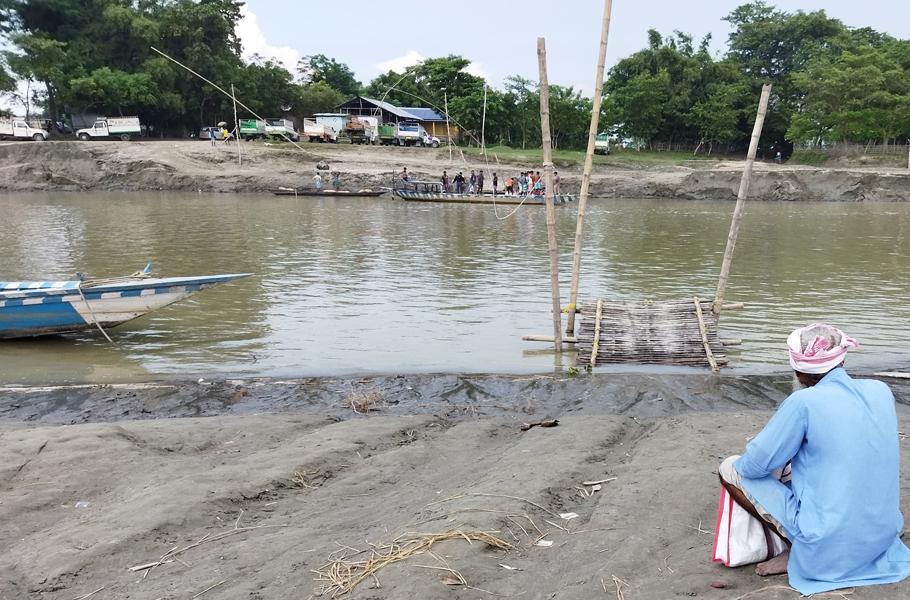
A month on, Assam’s displaced families stuck in squalid ‘exile’

In a damp corner inside a shack, a moldy plate lies covered in flies. Because most nights, Hanif Ali, father of two girls, is too tired to either finish his plate of food or wash it after loading and unloading goods trucks the whole day. The guilt of wasting food doesn’t let him sleep. “I often wake up at night. My stomach is in a knot and my heart in my throat,” he says. “My...
In a damp corner inside a shack, a moldy plate lies covered in flies. Because most nights, Hanif Ali, father of two girls, is too tired to either finish his plate of food or wash it after loading and unloading goods trucks the whole day.
The guilt of wasting food doesn’t let him sleep. “I often wake up at night. My stomach is in a knot and my heart in my throat,” he says. “My children don’t have enough to eat back home. How do I eat?”
Ali last saw his two daughters—the elder is five years old and the younger barely seven months—nearly a fortnight ago when he left them behind at a camp in Dhalpur in Assam’s Darrang district. He then came to Kharupetia town, around 40km away, in search of work. His other family members—wife, parents and two sisters—are still living in a makeshift hovel they cobbled up after their home was demolished in an eviction drive to clear government land in September.
The 30-year-old lived in Dhalpur, a cluster of villages on a Brahmaputra char (sandbar) in the Sipajhar area, making a living selling vegetables grown by his father on three bighas of land. Ali would then take them to Guwahati, around 65 km away, and sell them in the Gandhi Basti market. Before his father, Ali’s maternal grandfather used to grow vegetables on that patch of land. Like Ali’s nana, most of these families of Bengali-origin Muslims migrated to Dhalpur from other chars of Assam after their land was lost to erosion. They claim to be living in the area since the 1970s, cultivating the char land.
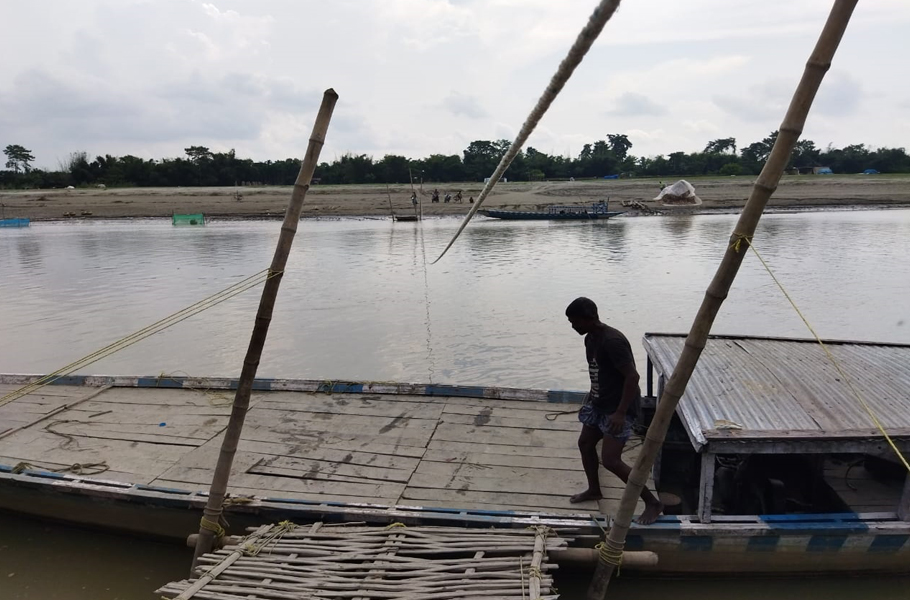
But on the morning of September 20, police and district administration officials arrived with JCB machines (earthmovers) and razed his house to the ground. According to the Assam government, the areas where the eviction drives are taking place are part of its Gorukhuti project over 77,000 bighas to start “modern farming” and hand them over to the ‘indigenous Assamese’ youths.
Following the drive, more than 1,000 families have become homeless. In the first round of evictions on September 20, around 800 families living in Dhalpur 1 were displaced. But it was the second round on September 23, this time in Dhalpur 3, which turned violent. Two persons, including a 12-year-old boy, were killed as policemen in riot gear armed with lathis and guns clashed with protesting villagers — all of them Muslims of Bengali origin — who were seeking more time to vacate the place.
News of the incident soon spread, especially because of a 72-second video where armed policemen are seen chasing and opening fire at villagers. A few seconds into the clip, a villager (later identified as Maynal Haque, 28), armed with a stick, is seen running after a photographer. Maynal eventually runs into a group of policemen closing in on him amid sounds of bullets. As he falls on the ground, policemen continue to hit him. Suddenly, the photographer comes running and violently stomps and elbows Maynal before being gently taken away by the police. As the camera zooms in, Maynal can be seen still breathing, blood oozing from his chest, marking the area where he has been shot. The camera then shifts to policemen who are seen hugging (seemingly congratulating) the photographer. The clip ends.

It is the mention of this viral video that makes Momtaz Begum restless. “Maynal is,” her lips tightens as she corrects herself, “was my husband and the father of my children”. Momtaz is unable to talk after that one sentence. She mumbles a few incoherent words, her eyes reddening with grief and anger.
Sitting next to her is Maynal’s 70-year-old father Makbul and mother Moimona. “Everybody comes and wants to talk about the murder. What is there to talk about? Who is even listening?” asks the broken father.
The family has taken shelter in a shanty by the gorge on a patch of land in Dhalpur 3 where all the evictees have taken refuge. There are nearly 8,000-9,000 people living in the makeshift hovels for more than a month now without any basic amenities amid a pandemic that saw a brutal second wave a few months back.
Inside the camp
“In the initial days, most people took shelter under structures made of tin roofs held together at 45-degrees angle by wooden beams salvaged from the eviction site,” says Abjalur Mehdi, general secretary, Sipajhar unit of the All Assam Minority Students Union (AAMSU).
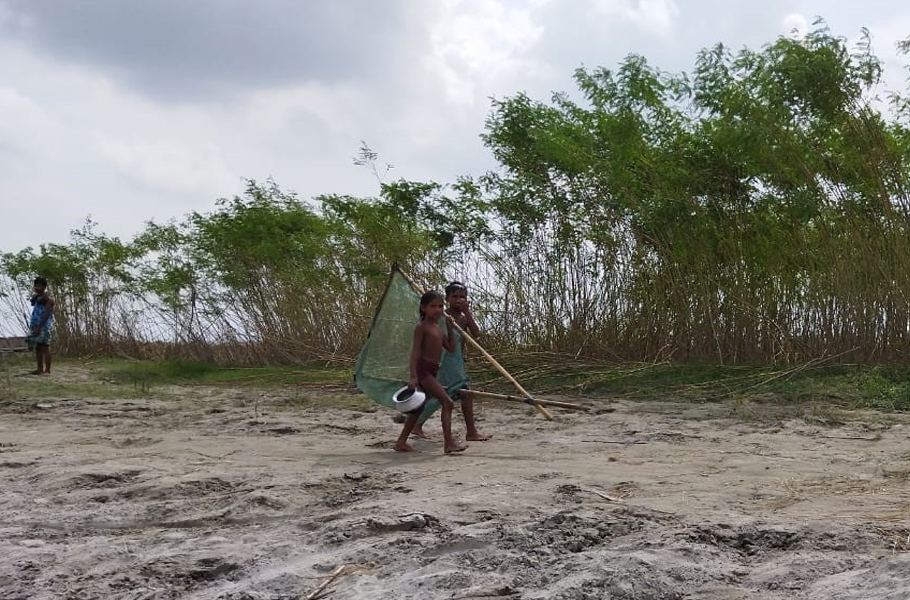
There was no water to drink, either. Mehdi tells The Federal how people bathed in the gorge and used the same water for cooking and drinking. Some Muslim aid groups have now installed a few hand pumps. But there still aren’t enough hand pumps, complains Anisa Banu, 17. According to her, it takes at least one hour’s wait to get one bucket of water. “There is always a long queue of people waiting with buckets and cans to fetch water.”
However, Anisa has a bigger problem —accessing a toilet. While there were none in the initial days and she and other women were forced to go in the open, mostly at night to avoid public glare, the few makeshift toilets that have come up now are far too few and dirty.
“The most difficult are the days when you are menstruating,” Anisa hesitatingly shares. She has yet to see or use sanitary pads and mostly survived her periods with cloth pieces. “But where do you wash them. Most people waiting to get water from the hand pump get grossed out when they see girls washing blood-soaked clothes.”
Before being evicted, all these families had access to toilets at their homes, some built under the BJP government’s Swachh Bharat Abhiyan.
This is why the villagers question the government’s decision to evict them. “If we were living there illegally, why did they encourage us by providing developmental facilities like schools, primary healthcare centres, fair price shops and Aadhaar centres?” asks Mehdi.
He adds that while the people are forced to live in unsanitary conditions, the eviction drive has also hit the process of vaccination against Covid-19 among the now displaced people.
“Some got their first dose in Gorukhuti. But we are not allowed to go there any longer,” says Sohabuddin Ahmed, a 28-year-old displaced resident. When asked if anyone from the district administration has come to visit the camp, Ahmed says, “No one from the government has come to see how we are living. What they forget is that while they discriminate against people, the virus afflicts all and one without looking at religion or ethnicity.”
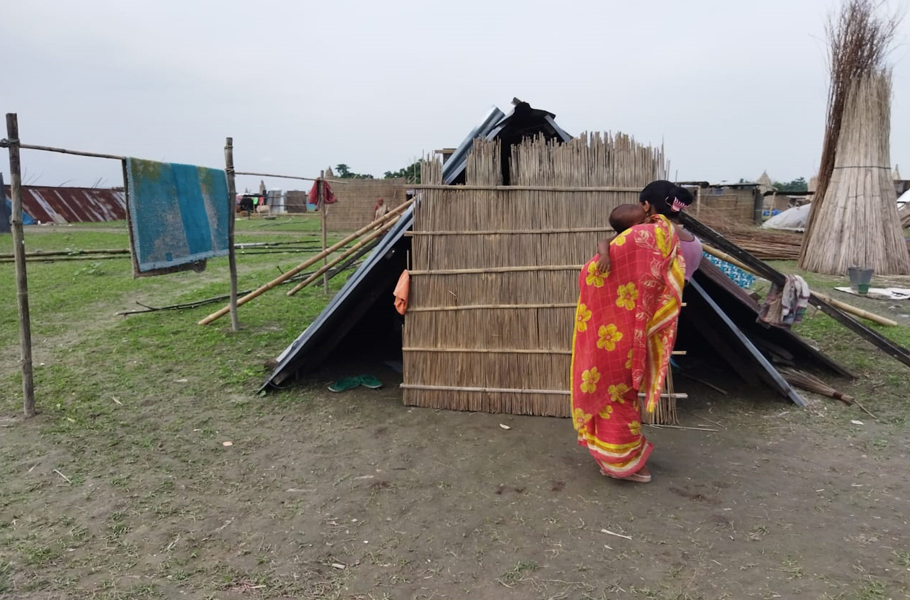
This government, Ahmed believes, is pushing them closer to the edge every day. “They have closed all roads. Our children can’t go back to their schools even though schools have reopened.”
Most children in the camp, The Federal spoke to, have lost their books during the eviction. Some books were burnt, others left behind in the melee or flattened along with their homes under the JCBs.
Meanwhile, the weather, too, has not been kind to the people. In the daytime when the sun is at its scorching best, the tin structures heat up and become unbearable to sit under. With no trees around, the heat only gets worse. Night time brings with it a different kind of conundrum. “The other night we were woken up by heavy rains flooding our shack. Whatever belongings we have now, including the bed clothes, got wet. We spent the rest of the night sitting inside the shack on our haunches,” says Ahomot Ali, 21.
The area where these people have been cooped up is prone to flooding. The families fear they will be swept by the river water sooner than later. “In any case, the evicted families have not been given any place to settle so far,” says Mehdi. The villagers also claim there has been no official communication regarding this patch of land. They were only informally told by the administration to move towards the river.
With uncertainty looming large, Ahomot is particularly worried about the approaching winter. “My wife is seven-months pregnant. I don’t know how I will manage with the growing expenses and no earning.”
The 21-year-old used to run a tea stall alongside his grocery shop before the eviction.
“They demolished our shop and home. Earlier, I would easily make Rs 300-Rs 400. What do I do now?” he asks.
Ali is scared to leave his wife behind and go look for work in some other place. “What will happen to her if there is an emergency?”
Two days back, Ahomot says, his wife complained of severe pain in her lower abdomen.
“The next day we went all the way to Mangaldoi [the district headquarters] to see a doctor.”
With access to the primary health centre in Gorukhuti cut off for the displaced people, Ahomot and his wife travelled 37 km. “First, we walked 7 km, then took a lift from a stranger for 10 km till the main road, and another 20 km on a bus to the civil hospital.”
He also can’t forget what happened to his friend Shahjahen. “Just three days after the eviction, his four-month-old son fell sick. By the time they reached the hospital in Mangaldoi, the baby died.”
But most other young men in the makeshift shanties are now looking for some source of earning, even if that means going to a distant place leaving behind their families. Ever since Hanif Ali came to Kharupetia, he has been loading and unloading gunny bags. “They pay me Rs 5 per sack. On good days, I end up making Rs 350-Rs 400,” he tells The Federal. Considering that each sack weighs around 30 kg, Ali has to lift at least 80 bags to make Rs 400.
But Ali says this weight is nothing compared to the one he has been carrying on his shoulder since birth—the burden to prove his citizenship, his rightful place in a country where he is perceived as an illegal immigrant from Bangladesh.
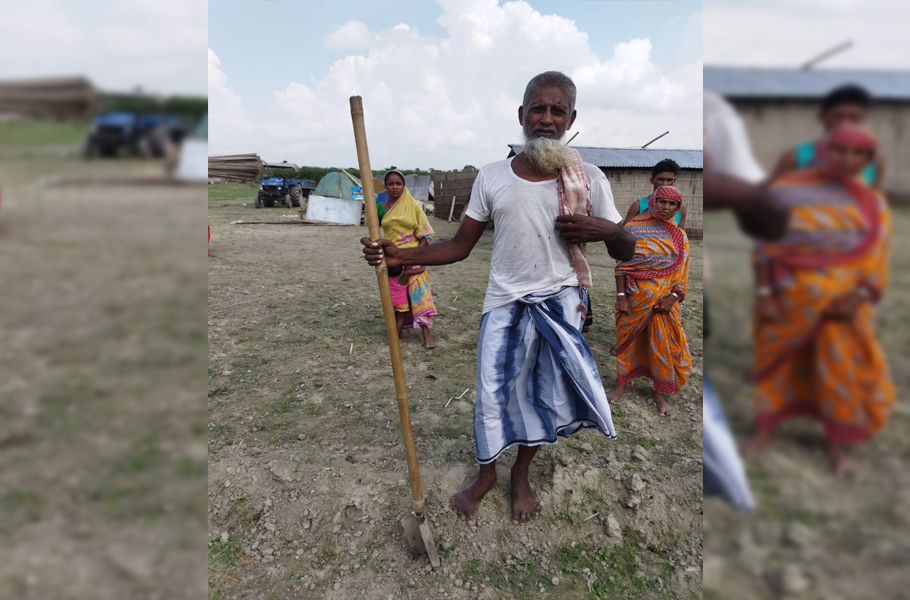
This, even after his name appeared in the final list of the National Register of Citizens (NRC) published in 2019.
The stigmatisation
Days after Haque’s killing, Assam chief minister Himanta Biswa Sarma told the media that out of 10,000 evicted people, 6,000 were not in the NRC.
It is this and many such statements by the chief minister which have drawn criticisms for specifically targeting the Bengali-origin Muslims, who form the majority of the state’s Muslim population of more than 12 million.
“There is nothing new in this. Every Bengali-speaking person is labelled a Bangladeshi in Assam. All these people have identity proofs and their names are in the NRC. Yet they are called illegal Bangladeshis,” said Mehdi, the All Assam Minority Students Union leader.
There is no end to this witch-hunting. Back in the camp, Anowara Begum, 41, can’t stop her tears every time she speaks. “They kept harassing us for years in the name of the NRC. We had to go from one office to another to submit the papers. So many trips, so many papers, so much money spent. And now that it has been done, they say we are still Bangladeshis.”
Anowara is miffed with the chief minister for his government’s contention that many “illegal immigrants” made it to the NRC using unscrupulous means. While around 19 lakh people found their names excluded from the final list published in 2019, the Rs 1,200-crore exercise was monitored by the Supreme Court.
Shortly after being sworn-in early this year, the Sarma-led BJP government filed a petition in the Supreme Court for re-verification of the NRC. This demand found resonance among several civil society organisations, including the influential All Assam Students Union (AASU), that claim around 80 lakh ‘foreigners’ have been ‘illegally’ included in the NRC. That’s almost one-fourth of Assam’s population.
However, critics of the controversial exercise say this is because the majority of those excluded from the NRC are said to be Hindus, indigenous Assamese and Hindus of Bengali-origin, apart from Bengali-origin Muslims. The official break-up of the numbers is not publicly available, though.
Not the first time
A few kilometres towards the north of Dhalpur lies the Niz Salmara village. The village is separated from Khuwarghat (Sanowa) by the Na-Nadi river. While mostly inhabited by Assamese Muslims, the other side of the river, including Dhalpur, is inhabited by Muslims of Bengali origin.
Dhalpur villages have been at the heart of conflict for some time now with residents of villages like Sanowa raising complaints against alleged illegal encroachments from time to time. This has resulted in evictions on three previous occasions ever since the BJP came to power in Assam in 2016 – in November 2016, January 2021 and June 2021.
Following the September 23 incident, the Gauhati High Court on October 7 directed the Assam government to file a detailed affidavit in the matter within three weeks.
The bench also asked if the state believed that the National Rehabilitation Policy was not applicable in Assam. The court has fixed November 3 as the next date of hearing.
Meanwhile, work is afoot on the Gorukhuti Agriculture project.
Lok Sabha MP and BJP’s National General Secretary Dilip Saikia says 30 tractors have already been ploughing the land. According to him, 500 “indigenous” youths have been recruited for a monthly honorarium of Rs 6,000 each per month from September onwards.
“This is to encourage them. A specific amount for their labour will be decided over the course of time. Camps will also be constructed for the new workers on the project site,” Saikia tells The Federal.
Dhalpur evictees like Noor Hussain no longer want to talk about what they left behind. Their only worry is their future.
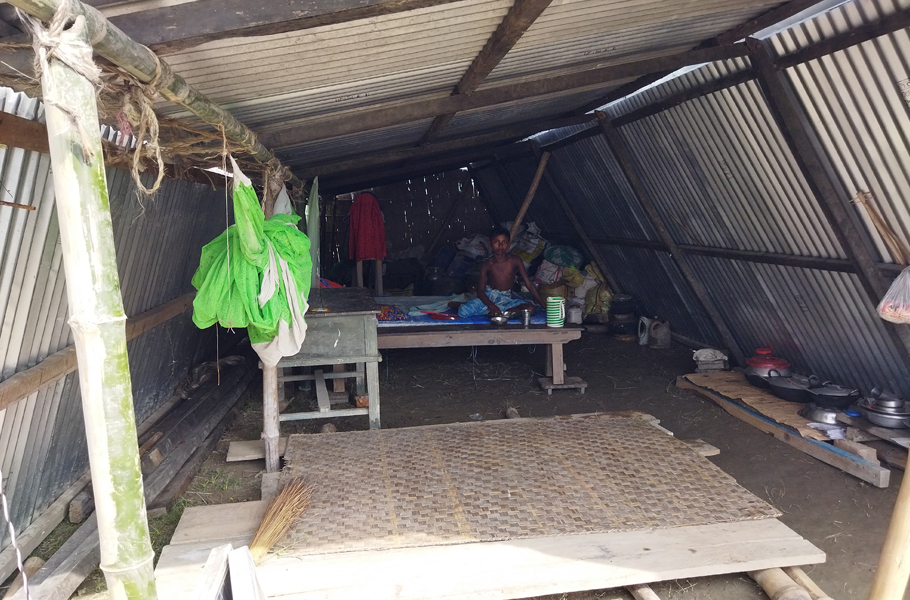
Even though the chief minister has said evicted people who are landless, indigenous and whose name is on the NRC will get six bighas of government land for re-settlement, Hussain and others are already fearing what this will translate to in future.
“We have been languishing here for more than a month now. Yet there has been no word or development on our rehabilitation. Our lives have been turned into hell,” says Khalilur Rehman, 72.
Noor Hussian takes solace in what the Gauhati High Court said. Calling the incident a big tragedy, the court has said, “Those who are guilty, if at all, must be punished, no doubt about that.”
“Yet why is there no action against the policemen who killed Maynal? How long will it take to punish Bijoy Bania [the photographer]? Why is there absolute silence from the local media and Assamese people?” Hussian asks. “Even the court has said ‘Khoon zameen par gir gaya [blood has been spilt]’.”
The fact of the matter, he adds, is that the bloodthirst has not yet quenched.
